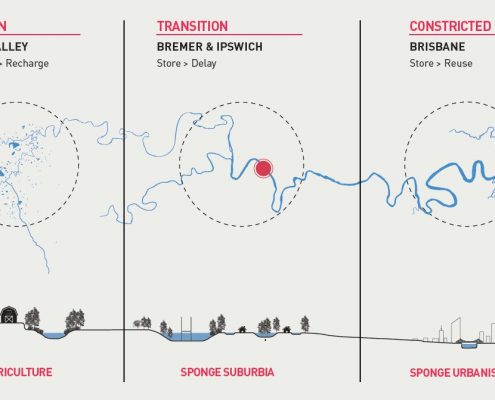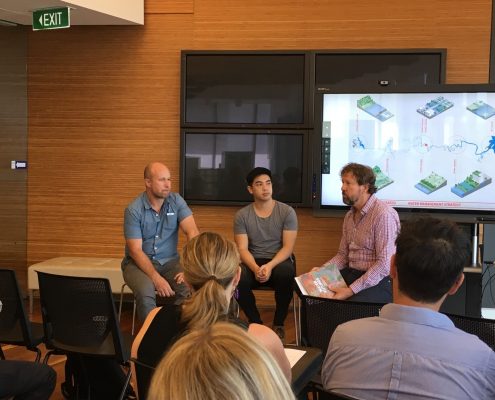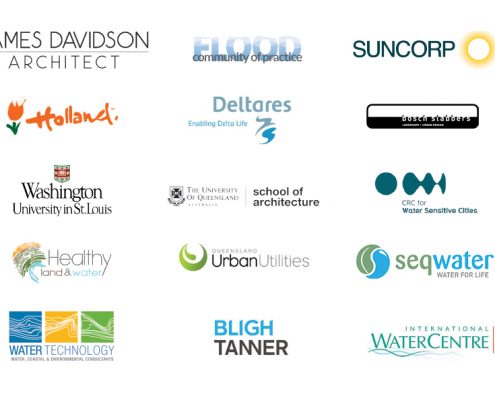Fluvial Transect – What is it and Why is it useful
The impetus to build resilient healthy catchments and communities is mounting and is critical if the impacts from an ever-increasing frequency, magnitude and duration of flood events are to be managed.
Over the last 3 years a co-designed pathway to build resilience to floods has been used to develop catchment-based solutions in Queensland, Australia and applied to high at-risk urban catchments in Asia. The concept of a Fluvial Transect developed in the SEQ WaterFutures project in 2016, using a design charrette methodology, has been the foundation for this approach. It is a fundamental step in understanding fluvial systems and a pre-requisite for integrated water management planning.
The outcomes of this approach are a visualisation of the shared vision that underpins the biophysical nature of the catchment, and the social aspirations of the local communities. Together both elements are the foundation for flood risk reduction strategies, best fit to making that local community safe and adapted to future flood impacts.
At this year Floodplain Management Australia Conference the story on the fluvial transect was presented. Click below on the information icon to access this story.
Acknowledgments
Throughout the initiation and evolution of the Fluvial Transect a multitude of colleagues have helped at various steps along the way. Their support, shared knowledge and inspiration has been invaluable and they include:
Brisbane:
WaterFutures event design and publication team from James Davison Architects – James Davidson, Sam Bowstead, Britt Hill and Clive Ba-Pa
Flood Community of Practice partners – Josh Cooney, Suncorp; Rolf Karst – Consulate-General of the Kingdom of the Netherlands; Simone de Kleermaeker & Alex Minett, Deltares; Chris Tanner & Barry Ball, CRC Water Sensitive Cities; Mike Foster, SEQ Water; Steve Clark & Tony McAlister, Water Technology; Mark Pascoe, International Water Centre; Graeme Milligan & Charlotte Spliethoff, Queensland Reconstruction Authority; Abel Immaraj along with Queensland Urban Utilities; Paola Leardini & Antony Moulis, University of Queensland; Richard Scott; Jelenko Dragisic; Caroline Austin; Kasper Kuiper; Gillian Lawson
International Collaborators
John Hoal, H3 Studio & Washington University, St Louis; Derek Hoeferlin, Derek Hoeferlin Design & Washington University, St Louis, Tijs van Loon, Stijn Koole & Steven Slabbers, Bosch Slabbers Landscape Architects, Rotterdam, Gregor van Essen & Frodo van Oostveen, The Water Agency;



